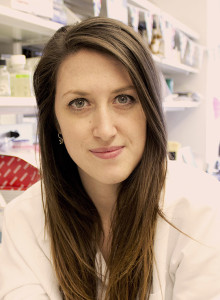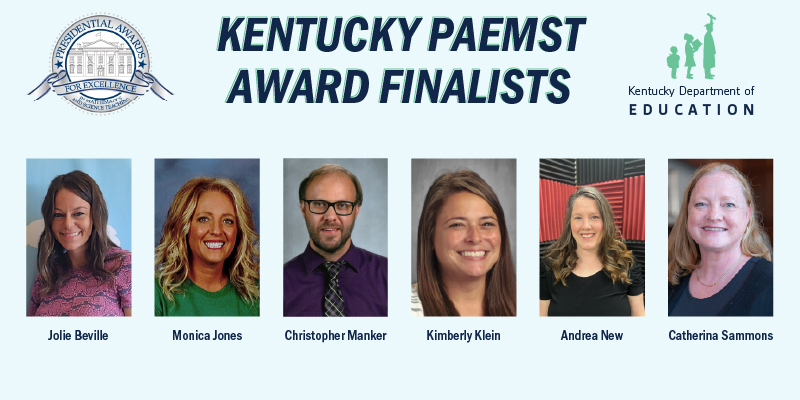
Ashley Richards Best
By Ashley Richards Best and Amanda Fuller
Each month, scientists from the Kentucky Academy of Science (KAS) will bring you ideas and resources for practicing science in your classroom. The Kentucky Academy of Science is a scientific society with more than 3,300 member scientists and students around the Commonwealth, in all disciplines – from agriculture to chemistry, engineering, biology, Earth science and physics. KAS is working on ways to connect teachers with science “coaches” – so please get in touch with us if you would like to connect to a scientist near you or get your burning questions answered at www.kyscience.org.
So You’ve Made It Through Flu Season
As April fades away, we start to see a decline in the number of cases of flu and the common cold. We’ve always known that flu prefers the cold winter months – which led us to believe that being cold is what causes disease. However, researchers have shown that the viruses that causes the flu are more stable in cold, dry environments, thus we see a seasonal increase in the number of flu cases.
Ideally, if someone comes down with a cold or the flu, they should stay home for the duration of the disease – even when they start to feel better as they are still “shedding” the virus for a few days. This can set students back in school. For that reason, it is important to understand disease transmission in order to minimize the risk of spreading the contagion. From an epidemiological standpoint, identifying the source is crucial to understanding the spread of disease in a community, allowing for intervention and prevention.
Help students design their own activity to mimic the infection process by presenting them with the following:
Materials: Diluted sodium hydroxide – NaOH. (Sodium hydroxide is sold as lye or caustic soda and used in making homemade soap. Do read the label and handle carefully! Students should be warned that some of their cups are literally poisoned.) You also will need disposable cups; disposable pipettes or plastic spoons; water and pH test strips. Or if you have access to phenolphthalein from a high school chemistry lab, it will be a dramatic pH test. Phenolphthalein is sold online. Using a drop of this indicator will turn a solution purple if the pH is high; perhaps reserve this for the final reveal round of testing.
Setup: Fill disposable cups one-eighth full with water, and ONE cup with 50:50 mix of NaOH:water. These will be distributed to the students. Remember who got the NaOH cup or number the bottom of the cups and record which number has the base.
Activity: Have students exchange “body fluids” with three other partners by each putting a pipette’s worth (or a plastic spoonful) of fluid into the other partner’s cup. Repeat this two more times.
(Variation or a way to repeat the activity to gather more information the second time around: Have students exchange once, then test with a pH test strip. Students record their results in a notebook, but keep the results to themselves. Exchange again, then test and record the results, keeping the results to themselves; then a third time, then test, record and share the result. After each round of exchange, students will have evidence of their infection level and can reveal this at the end.)
Modeling disease testing: Have each student use a pH strip to test his or her liquid. If the student was infected, their pH strip will change color. Alternatively, add one drop of phenolphthalein to each cup; a color change will occur if the liquid is basic – or “infected.”
Modeling epidemiological studies: Can students use their observations of the phenomenon of “infection” to develop a model for disease transmission through a population? Have the class work out together who was originator of the disease by talking through with whom they exchanged fluids. (It may help to separate the infected students from the non-infected students.) Does it help to draw a diagram to trace the spread of the disease?
Discussion topics: Is this experiment realistic of disease spread in humans? What other factors could play a role in disease spread that would affect transmission? What are some of the ways different diseases are transmitted? How could we change this experiment if we wanted to model the spread of a food-borne illness?
Kentucky science standards met by this activity:
- Practice 2 – Developing and using models – Students are modeling the transmission of flu through a population and can use it to propose prevention mechanisms.
- Practice 4 – Analyzing and interpreting data – Can students compile the results after each round of exchange and are there patterns after each round of transmission? What might have happened if we exchanged one more time? What would happen if there were fewer exchanges?
- Practice 5 – Using mathematics and computational thinking – Is there a pattern in the numbers of infected people after each round? What can this tell us about infection rates?
- Practice 6 – Constructing explanations and designing solutions – Can students explain how diseases are spread? Can they propose ways to reduce the transmission or slow it down?
- Practice 7 – Engaging in argument from evidence – Can students state a claim and defend it, about the origin of the disease? Can they propose a method to control the spread of the disease and defend that using the evidence collected here?
Kentucky science standards crosscutting concepts
- Cause and effect – Microscopic organisms are capable of infecting the cells in our body. In response, our immune system works to kill off the invading pathogen. The effect of that can be felt in the many uncomfortable side effects we feel when we are ill.
- Systems and system models – Modeling disease transmission can help us better understand disease. Scientists model disease transmission to predict the upcoming flu strains, which is needed to create the yearly flu vaccine.
- Patterns – Do we see patterns in the transmission of the disease after each round of exchanges? Is it easier to see a pattern in the numbers on a table or in a visual representation, like a graph or a diagram?
Ashley Richards Best is a third year doctoral student and National Science Foundation graduate research fellow at the University of Louisville and Amanda Fuller is executive director of the Kentucky Academy of Science.




Leave A Comment